The content of the article
Delphinium is a representative of the Buttercup family. A poisonous flower is one, two, and perennial. It tolerates low temperatures and grows up to 2 m in height. Blue, pink and pale white dolphiniums decorate gardens and use them for vertical decoration of walls and fences. Ready-made seedlings of exotic flowers will cost a decent amount. It is more profitable to purchase seeds and grow a dolphinium with your own hands.
Where to buy seed
Only reputable nursery staff and breeders know how to properly store seed. Seeds of exotic flowers lose viability at room temperature. The blank is kept in the refrigerator or in special chambers, where it is always dry, and the thermometer does not show more than zero.
Delphinium, sold in markets or in supermarkets, does not germinate in 60–80%. The point is not in the gardener who used the wrong substrate or fertilizer, but in the seed itself. Market traders do not know how to create the right conditions for exotic flowers. Pack the seeds in paper bags and keep warm along with the rest of the plants. The result is a lack of seedlings and wasted money.
You can ask for delphinium seeds from neighbors who grow bright bushes. A few brown capsules are cut from healthy and well-developed plants. Saturated color indicates that the flowers are ripe. Some tear off specimens that are only covered with brown spots and store in a cool room until the workpieces change color.
Seeds are gently poured onto a clean sheet, dried and placed in glass jars. The containers are placed in a refrigerator or freezer, taken out to a balcony or a veranda. At sub-zero temperatures, seed is stored for up to 15 years. To “wake up” the delphinium, it is enough to stratify and plant the seeds in the ground.
Plant preparation
Seeds are first disinfected:
- Prepare a rich pink solution of potassium permanganate or fungicide. Recommend “Fitosporin” or “Maxim”, which is diluted with water according to the instructions.
- Delphinium seeds put in a cloth bag and immerse in disinfectant for 20 minutes.
- Remove the workpiece and rinse off the remaining solution with running water, and then put it on a saucer and soak.
There should be little liquid, a few drops of Epin or Zircon are added to it. Means stimulate growth and increase the percentage of seedlings. What to do after soaking?
- After a day, top-dressing should be drained, and the seeds should be laid out in a thin layer on wet gauze or a piece of cotton fabric.
- Roll the cloth up with a roll that is not too tight and put it in a plastic container.
- Put the container with seed in the refrigerator and regularly add 10–20 ml of water so that it covers only the lower part of the gauze roll.
- When there is too much fluid, the seeds do not breathe and begin to rot.
- An alternative to water is moist moss, which is used to transfer fabric rolls with delphinium.
Keep seed in the refrigerator for about a week. When small white dots hatch, the workpiece is moved to the windowsill and kept under phytolamps or fluorescent for several days. Germinated and warmed seeds are planted in open ground or in boxes with a special substrate.
In early spring, some gardeners soak the seed, wrap it in gauze and put it in plastic bags. The billet is buried in the ground and left for 1-2 weeks.They do this in April, when the snow begins to melt and the temperature ranges from - 5–10 to + 3–6 degrees.
Outdoor cultivation
Seeds of the annual delphinium are recommended to be planted immediately in open ground in mid-April or early May. The soil is carefully prepared, making recharge. On 1 m2 of land you will need:
- peat and humus - 2 kg each;
- wood ash - 100-150 g;
- nitrophoska - 20-30 ml.
Coarse sand is sure to be added to heavy soil. Per square meter, about a bucket and a half, so that the soil becomes more loose and moisture permeable. 20-30 g of lime is added to the soil with high acidity, otherwise the delphinium will be weak and dull.
The components are thoroughly mixed, poured into beds and dug up soil to a depth of 25-30 cm. The territory intended for growing exotic flowers is carefully leveled, breaking lumps and removing weed residues. The site is slightly tamped and covered with shallow grooves.
The beds are poured with filtered water and sown with germinated seeds. They cover future bushes with a centimeter layer of sifted earth. Protect from frost and rain with a thick film or tarpaulin. The soil is regularly ventilated and moistened, and on 20–25 days after emergence the seedlings are fully opened.
How to care for delphinium seedlings
- Make sure that the earth does not dry out.
- To fertilize periodically: first, nitrogenous, after flowering, replenish with phosphorus, and feed potassium in late August and early September.
- Loosen the soil and remove weeds.
This is enough for the plant to develop normally, timely form buds and throw buds.
From the fridge to the drawer
Growing perennial delphiniums is a troublesome, but interesting occupation. Seeds are disinfected and stratified, and then they are planted not in open ground, but in wooden or plastic boxes with a depth of 10–20 cm.
While the seed swells and sprouts, a substrate is prepared. Mix:
- leaf or turf land;
- sand;
- humus.
Take the components by eye, so that a light, loose soil is obtained, which allows air to pass through and does not trap excess moisture. Peat is advisable not to add. It will make the substrate too acidic, and the delphiniums will turn pale.
Replace peat with wood ash: 100 g additives per bucket of finished substrate. An alternative to organic recharge is a mineral complex. A tablespoon of fertilizer on 10-12 liters of land.
Fill 2/3 of the drawer with the prepared substrate, not forgetting the drainage layer. Distribute sprouted seeds. For 1 square. see accounts for 1-2 pcs. The seed is small, so it is recommended to use a wooden toothpick:
- Moisten a sharp tip in water.
- Gently pick up the seed.
- Put it in a drawer, squeezing slightly into the ground.
Sprinkle future seedlings with a thin layer of substrate, tamp with a sheet of paper or glass. Cover the box with burlap or a piece of cardboard so that light does not get on the seeds, and send the dolphinium to a cool room. Maintain the temperature in the room no higher than +15, otherwise the flower will not rise. Periodically moisten the soil with a spray bottle or a small watering can with a strainer on the nose.
Abundant watering is contraindicated to the Delphinium, otherwise rot or a black leg appears on the plant, and the seedlings die. The temperature cannot fall below +12.
The first shoots will hatch after 8-10 days, a maximum of 3 weeks. Usually only 60–70% of seeds germinate, even if the seed was of good quality, and the gardener carefully prepared it. Weak seedlings need sun, so the box with seedlings is moved to the windowsill. Increase the temperature gradually to +20, so that the delphinium feels comfortable.
If the seeds were planted in late February or early March, when the daylight is not long enough, thin seedlings are illuminated with phytolamps so that it does not stretch and weaken.
Dive is carried out after the formation of the third full leaf.
How to plant a dolphinium
Saplings of an exotic flower are planted in peat pots. Conventional plastic ones, filled with a nutrient substrate with the addition of mineral fertilizers, are also suitable. Peat tablets are recommended to soak in a fungicide solution to protect the delphinium from the black leg.
Seedlings in a box before picking are poured with water to soften the ground. With a spatula or with hands, a young seedling is separated from the rest, trying not to injure the root system. Take out of the box along with a lump of soil. Do not clean the earth, but immediately transfer the flower to a new pot. Leave the cotyledon on the surface of the soil.
The transplanted delphinium is watered after 2-3 days. It will take a plant time to adapt and take root. 3 weeks after the picking, the seedlings are fed with mineral fertilizers intended for roses, or organic solutions. For example, from wood ash or mullein.
A healthy delphinium has deep green leaves. If the apex is faded, the flower needs more sun or fertilizing.
Habitat Preparation
An exotic plant is transferred to open ground at the beginning or middle of May. The main thing is that at night the air temperature does not fall below +10. Light frosts will not harm young bushes, and severe frosts can destroy seedlings.
To delphinium quickly took root in the garden, it is tempered. In the afternoon they put on the illuminated windowsill and open the windows. Seedlings will get used to ultraviolet and cool air. Flowers can be tempered on the balcony, but be sure to bring it into the house at night.
So that seedlings grown with such difficulty do not die after transplanting, you need to choose the right site:
- One of the main conditions is a lot of morning sun. After dinner, the shadow should fall on the plants.
- It is impossible for melt or rain water to stagnate in the area with dolphiniums.
- Plant flowers at a decent distance from shrubs and trees. Their root system will dominate and draw all the beneficial substances from the ground, depriving the delphinium of nutrition.
- Tall exotic bushes can break due to strong gusts of wind, so they are recommended to be planted next to a house or a fence that will protect the plant.
A distance of 40-60 cm is observed between the flowers. A mixture of humus, lime, wood ash and mineral fertilizers containing nitrogen is added to the pits. The root neck and kidneys are left on the surface of the earth.
Perennial delphinium is fed in the same way as the annual:
- in the spring make nitrogen fertilizer;
- when flowers fade, phosphorus composition;
- in early August fertilize with potassium.
Important: If at the end of May - beginning of June, the flower stalks of the delphinium fell, you do not need to add an additional portion of fertilizer. Symptoms indicate a yellow heart-shaped scoop that lays eggs in the basal part of the plant. To prevent infection by insects, dolphinium bushes are sprayed with insecticides in spring and summer.
After flowering, wilted branches are cut off, and the hole is covered with plasticine so that water does not accumulate inside the stem. Moisture promotes decay of the plant. Every 4-6 years, the bush is transplanted to a new place, because the flower gradually depletes the earth.
Perennial delphinium will become a decoration of the garden. It is only necessary to take intensive care of two-meter bushes in the first year of life, then it is enough to water and loosen the soil in a timely manner, periodically clean the site of weeds and carry out preventive spraying with insecticides.
Video: Delphinium Seed Success Secret

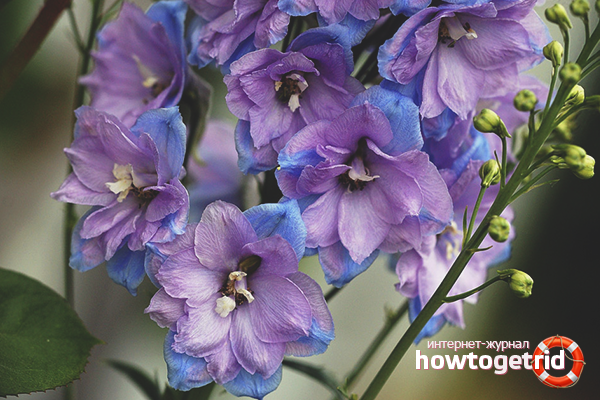
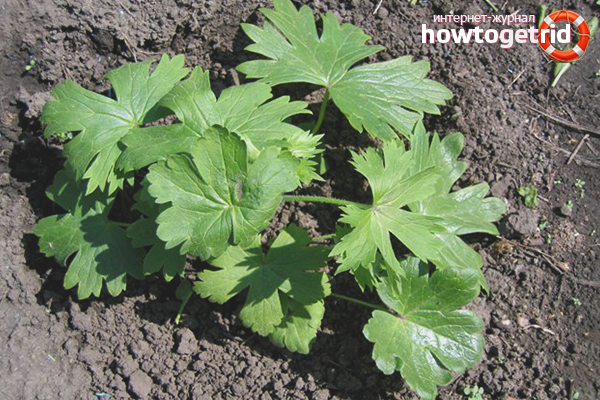


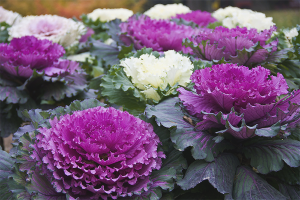
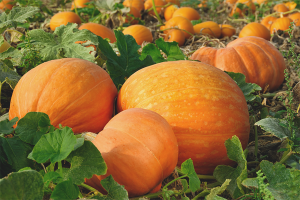
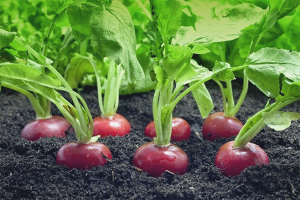

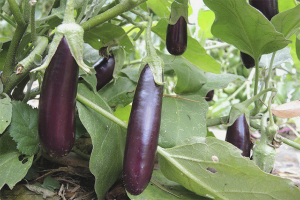
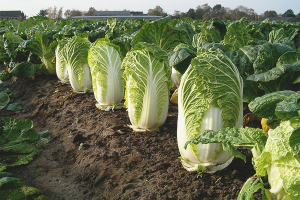
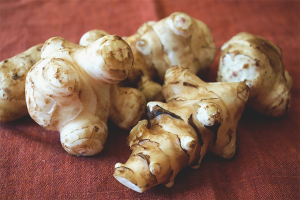
Submit